Construction Manager‘s pre-BIM mandate survey on BIM adoption has revealed an industry that is gradually absorbing BIM into its contracts and processes – but with patchy client uptake and weak understanding of its fundamental standards, known as the “eight pillars of BIM”.
The survey of 557 industry professionals also revealed that overall levels of confidence on BIM adoption are relatively low, with 27% scoring themselves as “very unsure” about working at Level 2 BIM, just 14% rating themselves as having “some confidence” and only 5% claiming to be “fully confident”.
And of the 82 clients in the public and private sector who responded to the survey, the largest group at 36% (17) also rated themselves as “very unsure”, although two claimed to be “fully confident”.
The survey’s respondents were from a representative spread of the industry. The largest group at 23% (129 individuals) were architects, M&E or structural design consultants, while 12% (67) worked for major contractors with turnover above £100m.
Smaller contractors with turnover below £100m were represented by 8% (44) and 5% were specialist subcontractors in Tier 2 or 3.
Clients and client advisers were strongly represented in the survey, with a total of 7% (38) across the public and private sectors, while another 10% (56) described themselves as project managers working for public and private sector clients.
Together, the clients were commissioning projects starting in 2016/17 with a total construction value of between £5bn and £10bn. Factor in the responses of the client advisers, and the total workload represented between £13bn and £20bn.
The key findings of the survey are presented below, and more details will be available in a free-to-download report on Level 2 BIM, published on Thursday 7th April.
Implementing the mandate
When the 82 clients who answered the online survey were asked about implementing the mandate, only 23% said they planned to ask for Level 2 BIM as a contractual requirement on 100% of projects – and that included just 14 of the 20 clients who represented central government departments.
From this group, the other six preferred not to say. The 23% total also included two private sector clients.
But out of 39 clients representing other parts of the public sector, including local authorities, health, education and housing, 20% said they would fully implement the mandate, and a further 20% said they would act on it to some extent.
But 53.5% of clients in this group agreed with the statement that “we will not make BIM a requirement, although project teams are free to use it”.
In total, 45% of the clients in the survey said they would not make Level 2 BIM a requirement at all – although teams were free to use it if they wished.
As a client, what will your requirements be on BIM from 4 April onwards? (%)
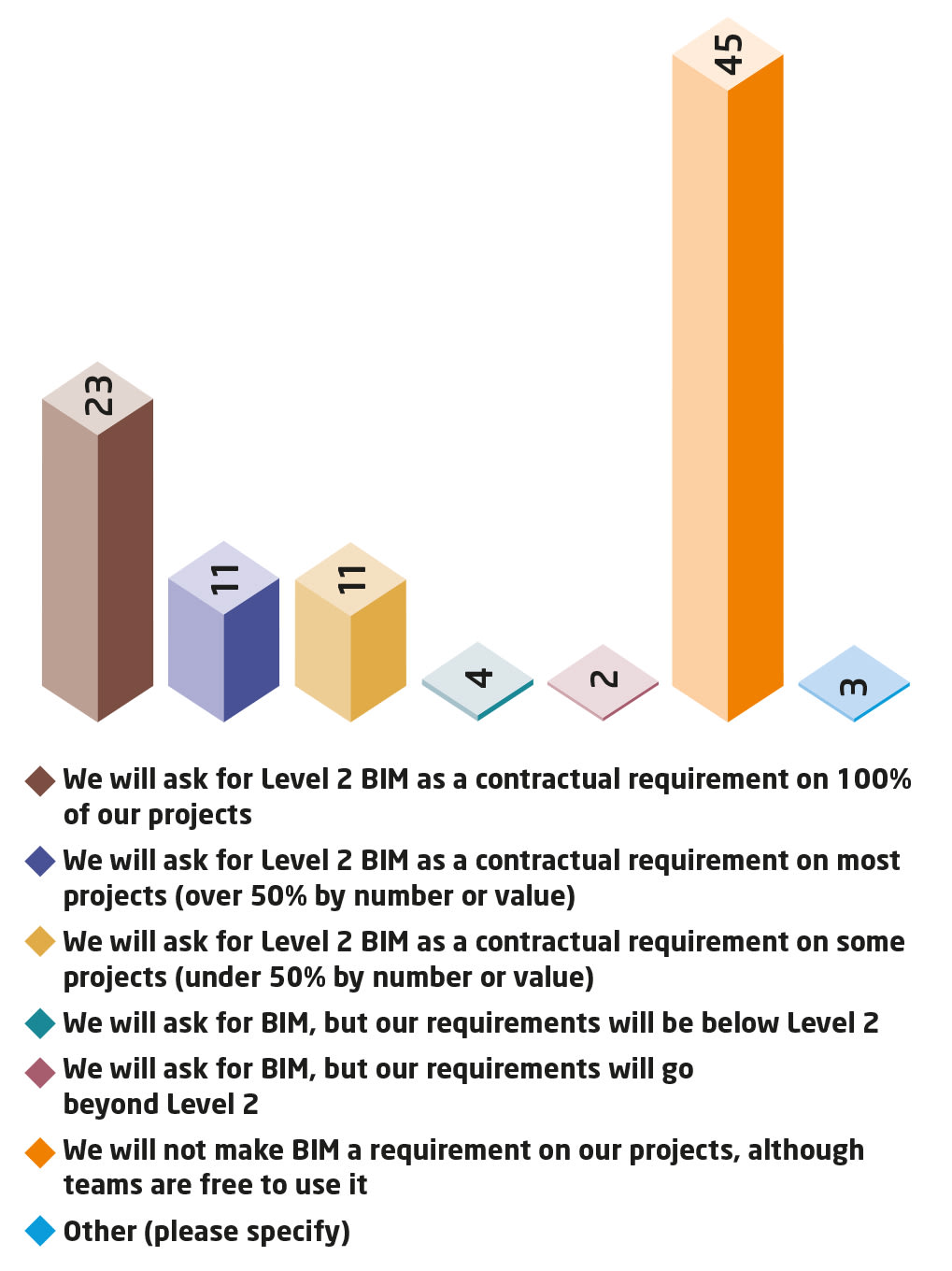
Level 2 BIM experience
Experience at Level 2 was still unevenly spread across the industry. Overall, 49% said they had not worked on a Level 2 BIM project, and 28% had only worked on one to three projects.
As you might expect, contractors with turnover above £100m had notched up the most experience: 36% had worked on one to three Level 2 BIM projects, and 22% had notched up at least 10.
But the Tier 2 and 3 specialist subcontractors seemed to have clocked up more experience than the smaller Tier 1 contractors (with turnover less than £100m). Among specialists, 27% had worked on one to three Level 2 BIM projects, and 15% on four or more. But among the smaller Tier 1 contractors, those figures were 11% and 11% respectively.
Within the client group, the number that had not yet worked on a Level 2 BIM project rose to 58%, or nearly six in 10. Even among clients in central government departments – and directly covered by the mandate – three said they were Level 2 virgins.
How many past and current projects has your organisation been involved in that use Level 2 BIM?
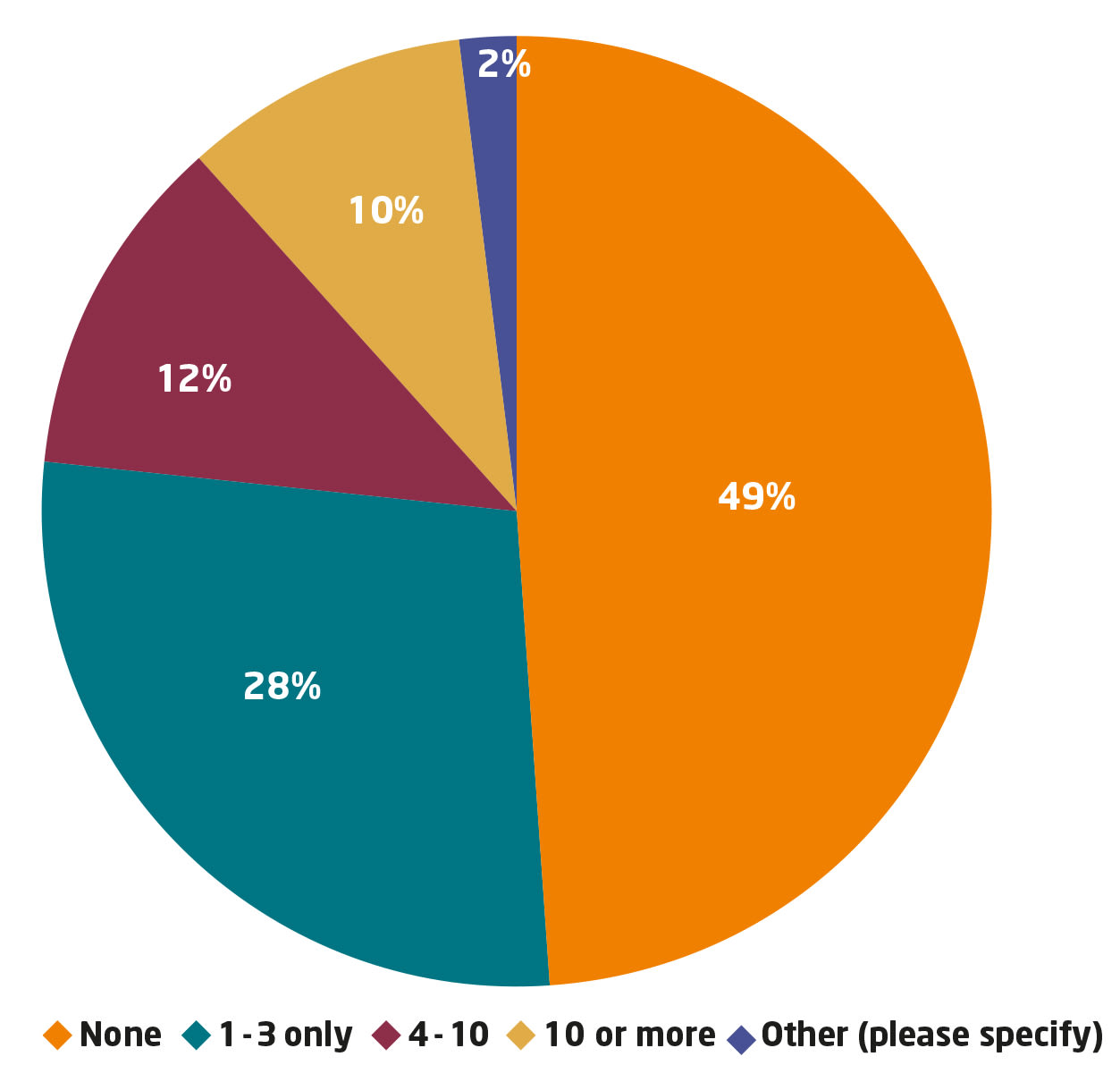
Confidence on Level 2 BIM
Overall levels of confidence on BIM are low, with 49% scoring themselves at one to three on a 10-point confidence scale, compared to 17% selecting the three uppermost scores – representing “confident”, “very confident” and “fully confident”.
Of the clients who answered this question, 17 declared themselves “very unsure”, including 15 in the public sector. But two clients, and five respondents in total, said they were “fully confident” their BIM processes were working well.
Thinking about your own BIM processes in general, how confident do you feel about delivering Level 2 BIM?
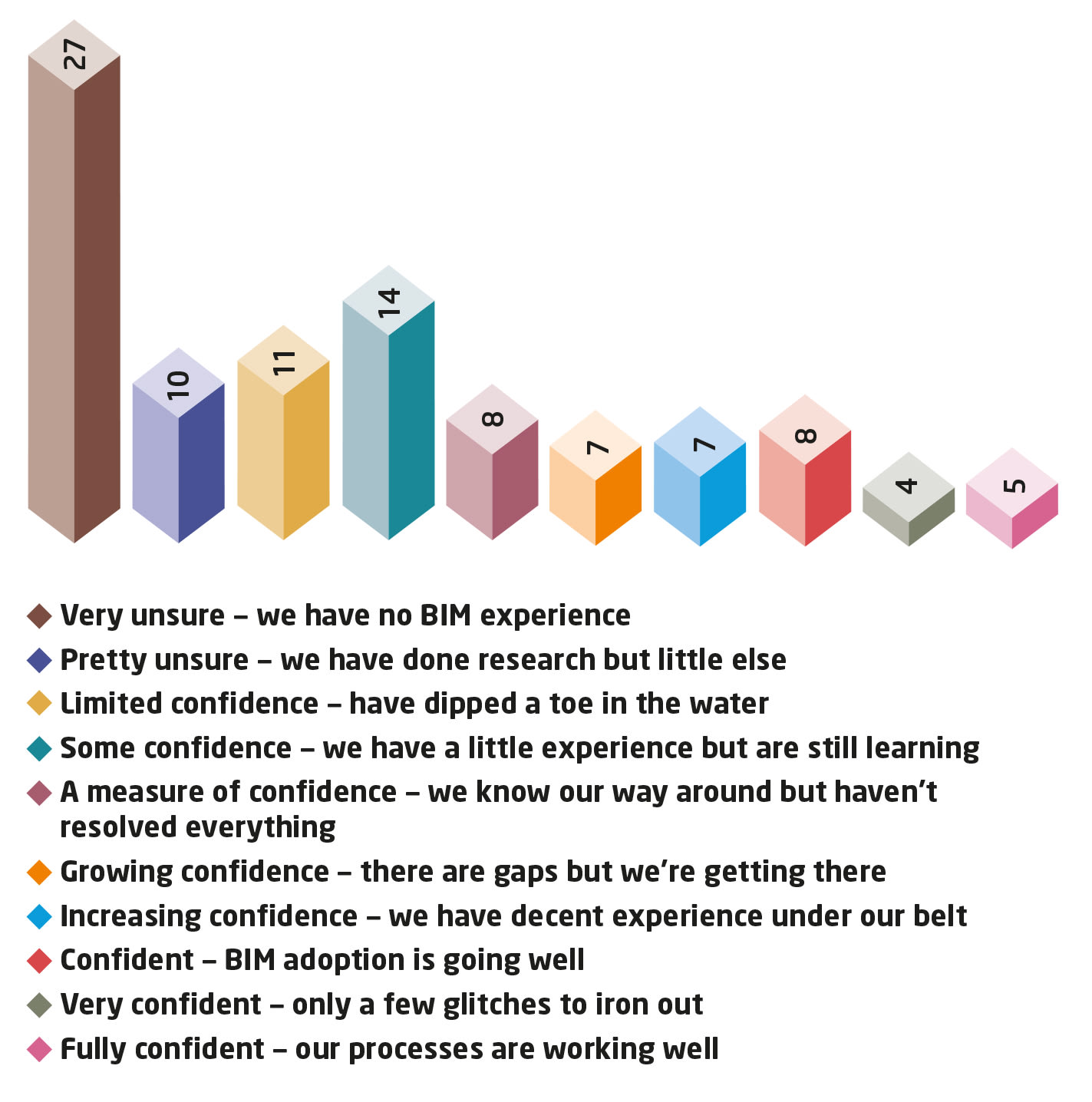
Eight pillars of BIM
A question on the “eight pillars of BIM” suggested that its standards were weakly embedded. PAS 1192-2 topped the table, with 20% saying it was fully embedded, while 15% said that the CIC BIM Protocol was embedded. But just 8% said that Government Soft Landings was part of their working practices, and the same number had embedded PAS 1192-5 on cyber security.
In the survey, as many as 58% claimed never to have used BS 1192-4: 2014, the standard that describes the usage and structure of COBie. This included five respondents who worked for central government clients, 18 who worked elsewhere in the public sector, and 21 contractors turning over more than £100m.
Only 12% of the sample claimed that its usage was “already embedded”. These included just two central government clients, three from elsewhere in the public sector, and nine contractors with turnover of more than £100m.
Among clients on centrally-funded projects, six claimed to have never used PAS 1192-2 and – even more surprisingly – seven said they’d never used PAS 1192-3, which covers projects’ operational phase.
What is your company’s experience of the following “eight pillars of Level 2 BIM” on projects so far?
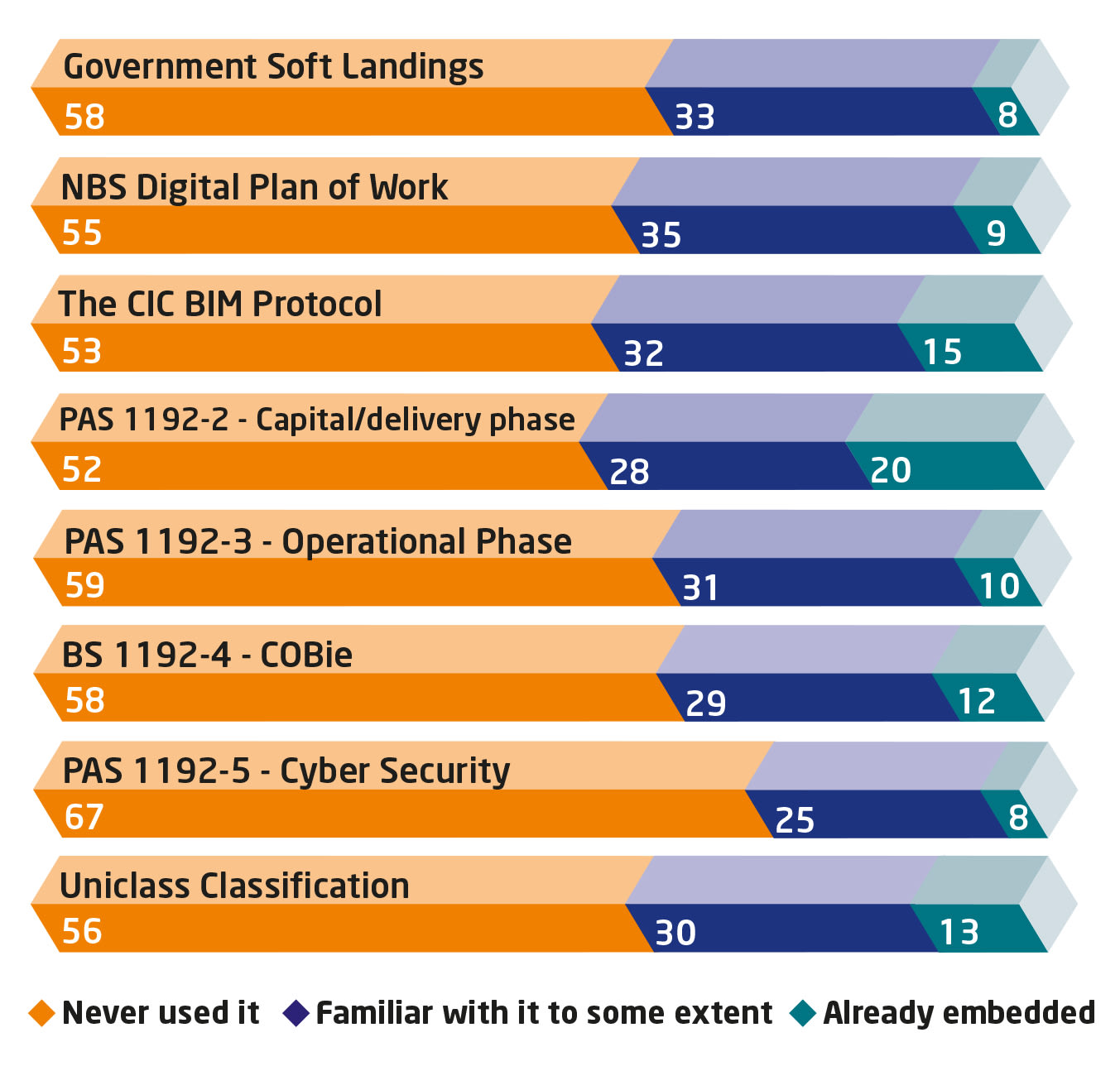
Where is the evidence
Asked about the impact of BIM on current or completed projects, BIM’s ability to promote collaboration emerged as the clear winner in terms of impact – 63% of the sample reported “positive signs” or “good results”.
Clients, however, had seen less benefit to their own budgets – 28% reported results in positive territory, compared to 40% overall. Clients were less likely to perceive benefits in terms of time and cost savings: 32% experienced reduced design time (versus 55% overall), 43% thought that it reduced time in the construction phase (versus 60%). But in terms of operational efficiencies, 49% of clients reported positive signs or good results – higher than the 44% in the overall sample.
Interestingly, the construction phase was in close step with the operational phase in terms of benefits. In total, 55% reported either positive signs or good results on reducing time in the design phase, versus 60% in the construction phase; on cost, 55% reported savings in design, almost matching the 54% recording savings in construction.
But there was little evidence so far that BIM was proving effective in reducing projects’ environmental impact, with only 9% reporting “good results” and 62% reporting that they had “not seen any evidence”, and 29% reporting “some positive signs”.
On projects you have worked on that used BIM, how would you describe the impact?
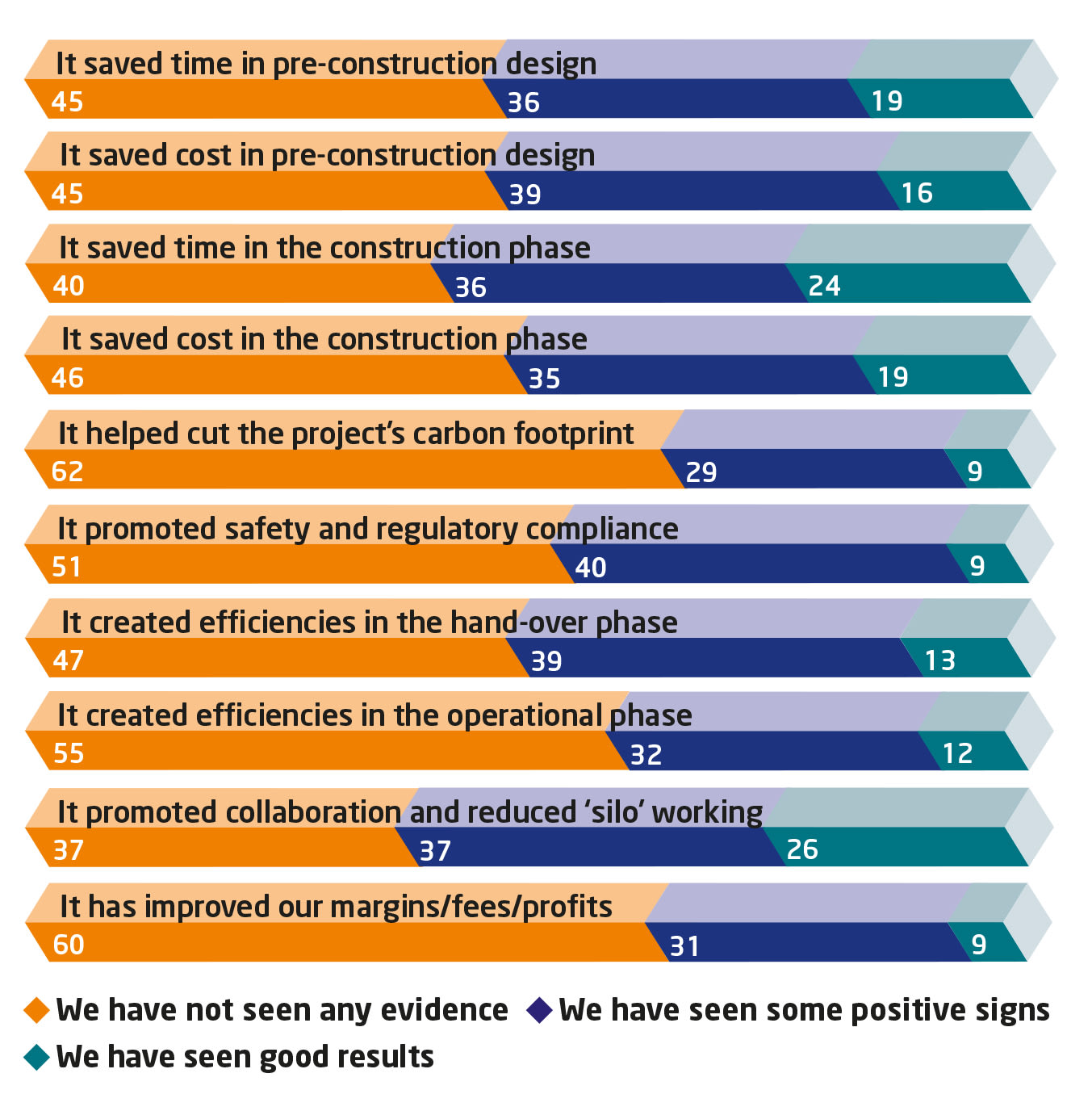
NBS Digital Plan of Work
The Digital Plan of Work, a software tool commissioned from RIBA Enterprises’ NBS in a £1m contract and originally seen as central to Level 2 BIM, has picked up some users but limited momentum. According to the 395 respondents who answered the survey question, “What is your organisation’s experience of the NBS Digital Plan of Work”, 13% had used it on a live project, and 10% had trialed it and planned to use it again.
But 13% had trialed it with no plans to use it again, and 48% of the sample had neither tried nor used it.
Among clients and project managers advising clients, as many as 57% said they had “neither trialed nor used it”, while only 9% had used it on at least one live project.
Comments
Comments are closed.












Good to see the results and analysis of the survey here. It feels about right, and gives us some sort of baseline that is more representative across industry, including Clients. You can spin it one way or the other about whether this is success or not re the mandate, but we need to have our head up and looking forward.
My gripe is that BIM+ should have approached the groups best able to help in the survey and certainly this opportunity was not taken up with our own (1000 members on LinkedIn for instance).